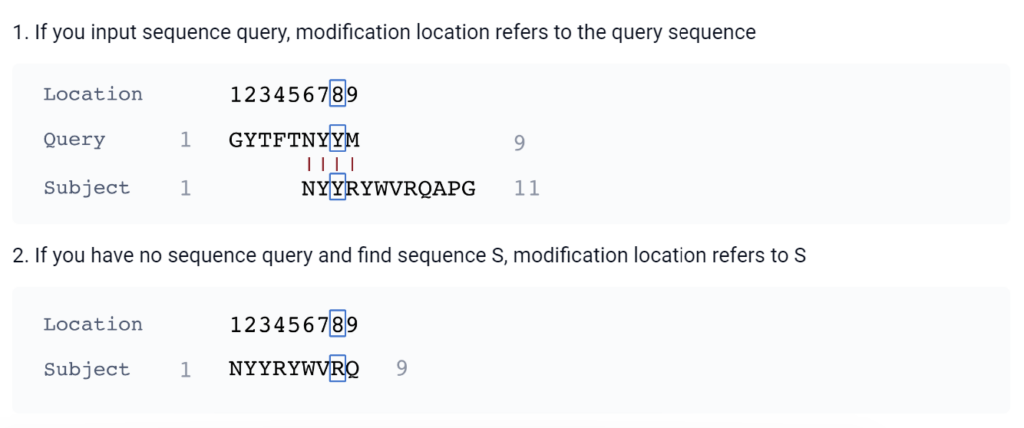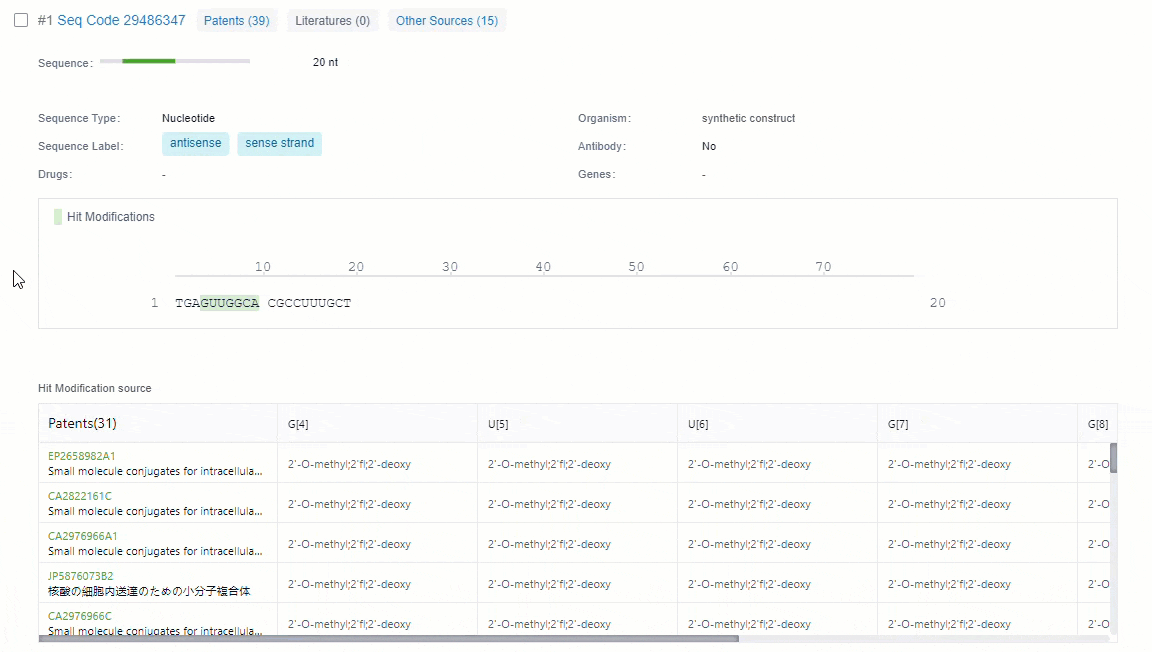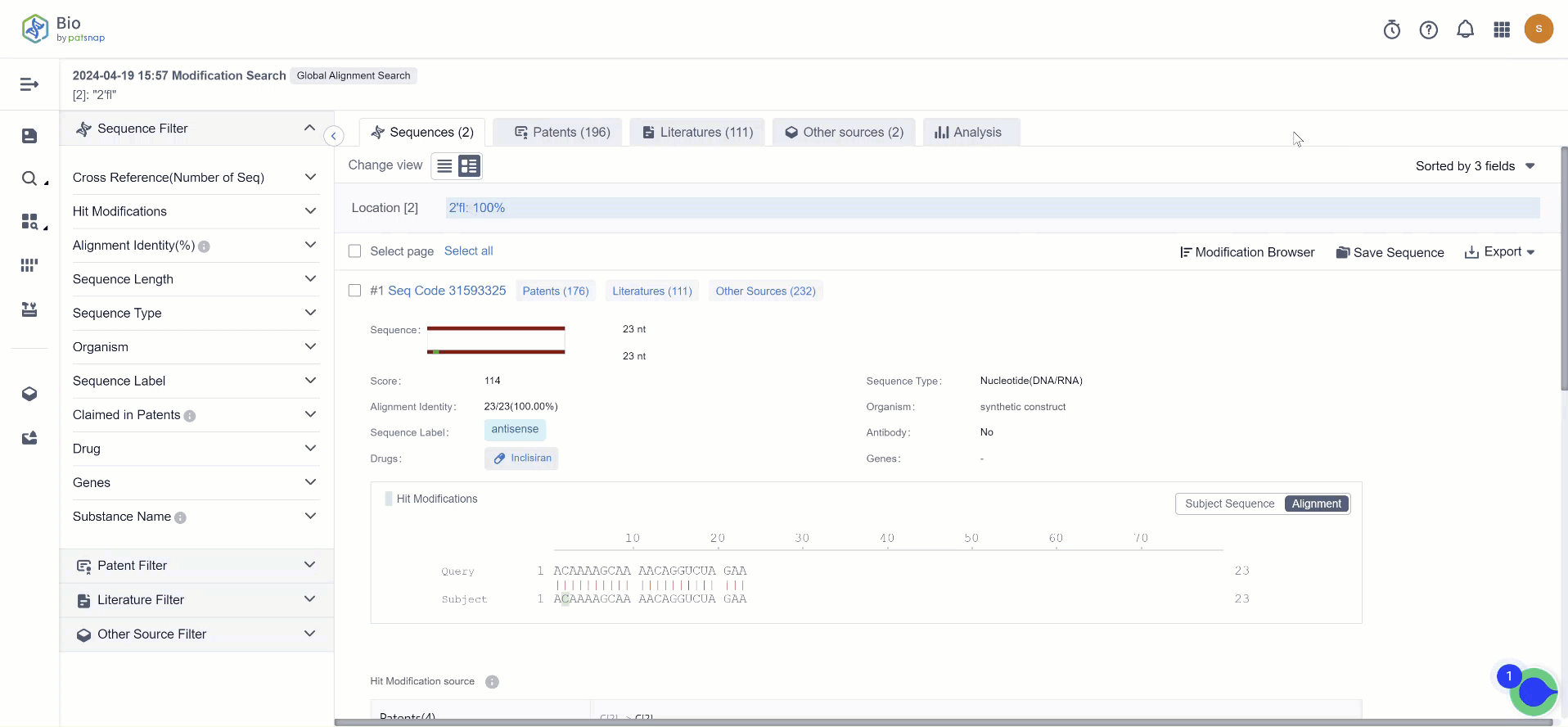Revolutionizing Biosequence Analysis: Introducing the First Modification Search Tool
In the ever-evolving landscape of pharmaceuticals and biotechnology, precision and efficiency are paramount throughout the research and development (R&D) process. To keep pace with the rapid advancements in biological sciences, innovative solutions are imperative.
In this article we will delve into Patsnap Bio’s newest release, the world’s first chemical modification search tool and how it can improve sequence searching techniques, and streamline freedom to operate (FTO) analysis.
Jump to:
What is Sequence Modification?
Sequence modification is central to drug development and intellectual property (IP) protection. It involves changing a protein or nucleic acid sequence by adding chemical groups at specific regions, inducing functional changes. Fluorescent labeling, glycosylation, and phosphorylation are just a few of the many modification techniques available to achieve optimal therapeutic properties, such as high bioavailability and target specificity, extended half-life, and reduced off-target effects. By understanding the intricacies of sequence modification, researchers can navigate the complexities of therapeutic development more effectively, ultimately advancing the frontier of medicine and improving patient outcomes.

source: Patsnap Bio
Establishing Patentability of Sequences
Sequence-based searches are crucial for determining the patentability of new sequences. They help to navigate the existing IP landscapes and pinpoint potential infringement risks. In fields like nucleic acid technologies, the strategic use of chemical modifications is essential. These modifications are instrumental in crafting drugs that optimize the effectiveness of oligonucleotides, making them viable for tackling complex diseases.
Despite its significance, the lack of standardization in describing chemical modifications in patents remains a glaring gap. Patent descriptions of modifications are often highly individualistic – for instance, 2’-O-methyl and 2’-ome both denote the same modification of rRNA. This poses a challenge in retrieving relevant patents when using traditional search methods and undermines the accuracy of FTO searches.
To overcome this, researchers must utilize a range of labor-intensive search methods. This includes combining traditional sequence searches with exhaustive keyword searches to capture all potential variations of a modification. Subsequently, they must then meticulously review modification data for each sequence manually, item by item.
Patsnap Bio Modification Search
Patsnap Bio eliminates these challenges by offering innovators a way to curate and analyze sequence modification data faster and with more confidence, leveraging AI. The newly introduced Modification search enables users to search for site-specific modifications, with or without a query sequence, drawing from a database of over 1.5M modified sequences. This capability addresses essential questions such as:
- How widely is this modification used?
- What existing prior art contains this modification?
- What other modifications are related to my query?

By facilitating the comprehensive retrieval and understanding of sequence modification data, Patsnap Bio empowers researchers, IP professionals, and R&D personnel to effectively approach the design and optimization of world-class therapeutics.
Key Features
- Standardized modification library: Leveraging advanced AI and meticulous manual curation, Patsnap Bio consolidates sequence modification data into a standardized library. This data features nine major categories and 382 subcategories of chemical modification types, ensuring comprehensive coverage.
- Flexible search options: Offering both a sequence-based and sequence-free search option, Patsnap Bio’s modification search facilitates the identification of trends and insights surrounding a specific modification. For a sequence-based query, up to 200 target sequences can be searched at once, using local or global alignment methods.

- Visualize modification trends: Equipped with robust visualization tools, Patsnap Bio enables users to seamlessly explore the distribution of chemical modifications within their search results. These tools facilitate the extraction of valuable insights related to queried sequences or modification types, enhancing decision making processes.

- In-depth source analysis: Identify new opportunities and assess patentability of inventions by quickly accessing the corresponding patents to your search results and diving into the modification claims.

- Instant modification report: With just one-click, generate exportable reports summarizing the distribution of hit modifications, as well as a summary of all other sequence modifications within a result set. These reports expedite the identification and compilation of actionable insights for further analysis and decision making.

Patsnap Bio: Charting the Future of Biotherapeutic Innovation
Offering unparalleled functionality and insights into the world of biosequences, Patsnap Bio is introducing a new era of efficiency and precision to the world of biotherapeutic innovation.
To learn more about Patsnap’s new Modification search, book a demo to see it in action, or try Patsnap Bio for free today.